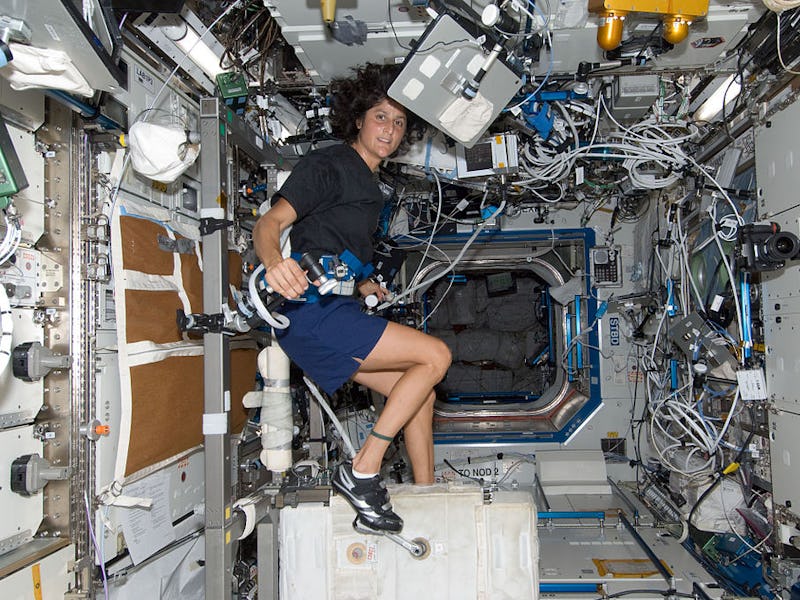Space flight may change how the brain looks and behaves back on Earth
This could affect our plans to colonize Mars.

Humans are fascinated with the idea of sending people to the moon and, eventually, to Mars.
NASA’s Artemis mission, scheduled for the year 2024, hopes to land astronauts on the lunar surface. This could be followed by a longer mission to Mars, with the hope of colonizing the red planet. Entrepreneurs like Elon Musk and Richard Branson want space flight to become so ubiquitous that you could be booking a ticket and catching a long-distance flight off Earth in the not-too-distant future.
But first science needs to answer a crucial question: What does space flight do to our health? Or, more specifically, our brains?
A study published this month in the American Journal of Neuroradiology illustrates how spending too much time in microgravity can take a toll on astronauts’ motor skills, cognitive abilities and eye sight.
"We were able to see the correlations between changes in brain structure with astronaut performance.
Nineteen astronauts took part in the study, seven of whom had undergone a short trip into space aboard the Space Shuttle, while the remaining 12 had remained off the Earth for longer periods of time onboard the International Space Station (ISS). Comparing MRI scans that the astronauts had done before heading to outer space and scans done shortly after their return to Earth, the researchers found a correlation between the time one spends in microgravity with different effects on their brain.
Connecting brain to behavior
Neuroradiologist Donna R. Roberts, M.D., from the Department of Radiology and Radiological Science at the Medical University of South Carolina, and lead author of the study, has been looking at the effects of space flight on the brains of astronauts since the early 2000s. Roberts used to work at NASA and noticed a dearth of data on the health impacts of working in space.
“I decided to go back to medical school and do this research myself,” Roberts tells Inverse.
In 2017, Roberts published a study that showed how long missions in space started to change the volume of tissue at the top of astronauts’ brain and decrease the amount of protective fluid surrounding their brain. The new study shows how those changes underlie the astronauts’ performance on certain critical tasks, such as opening the space station’s hatch, climbing a ladder, exiting a vehicle or even walking along the surface of a planet.
“In 2017, we saw that there were widespread changes in brain structure but the question was, does it mean anything?” Roberts says. “[In the new study] we have cognitive data, performance tasks, and we were able to see the correlations between changes in brain structure with astronaut performance.”
Cause and effect
The new paper is one of few studies detailing these effects. Part of the reason for this is the small pool of study subjects to draw from, as very few people have actually gotten the chance to go to space.
Another problem is that NASA does not conduct follow up imaging of astronauts’ brains once they return back to Earth, according to Roberts.
“We’re planning on going back to the moon within the next five years, so these are important questions to answer,” she says.
However, this doesn’t necessarily mean that NASA’s plans to return to the moon — or their public-private partnership to colonize Mars — have to be called off.
“I’m certain there will be a way to mitigate the effects, we need to figure out what’s causing them first,” she says.
Further research is needed to narrow down the cause behind these changes in astronauts’ brain structures. One reason could be what’s referred to as “puffy face syndrome,” which can be seen clearly in pictures of astronauts in space. Fluids travel towards the head of people living in space without the pull of gravity pulling the fluids down, resulting in a puffy face.
There are possible countermeasures to puffy faces in space, according to Roberts, whereby fluids can be forced to shift downwards instead.
Roberts will continue in this field of research, and hopes to have more female subjects in the future as there may be important sex differences in how space flight affects the body. Only three women took part in this recent study, although NASA’s Artemis mission plans to send the first female astronaut to the moon.